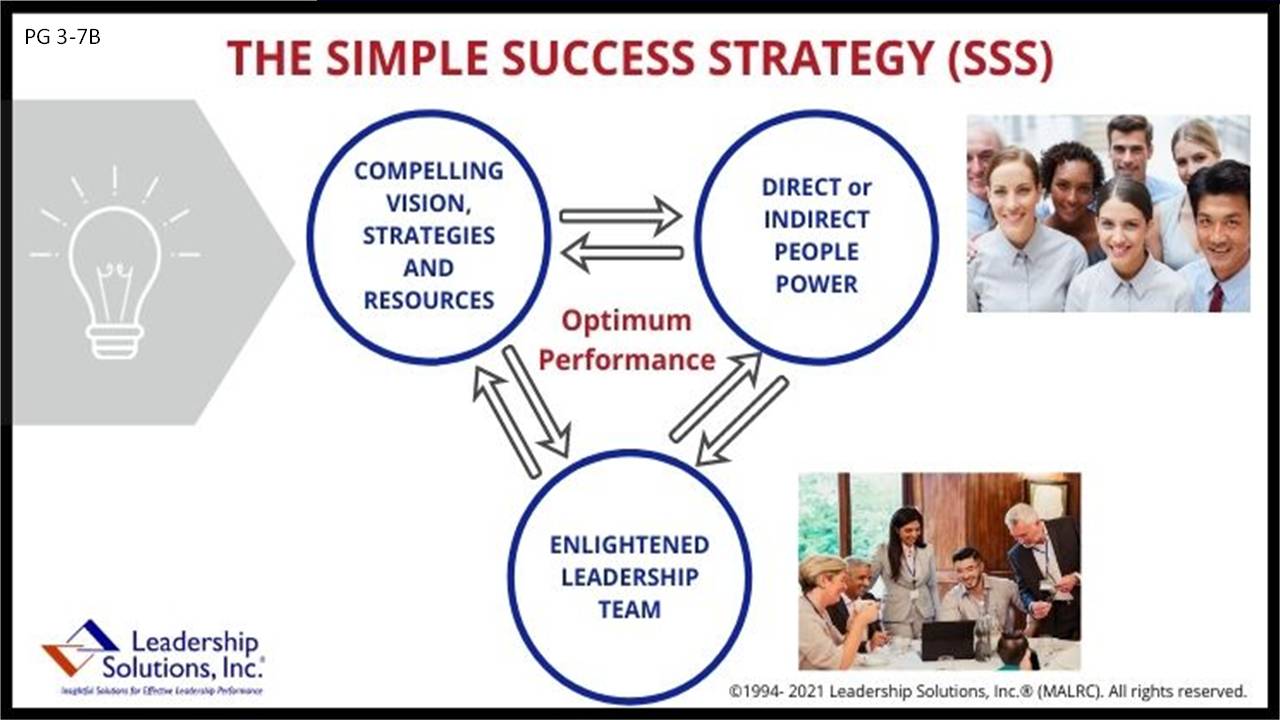by Peter A. Arthur-Smith
“Having a compelling vision is one thing, although positioning yourselves to pull-it-off is quite another.”

Two weeks after their prior envisioning session, the SuperGuard leader team met again with their Visionist, Harry, along with Christine listening in. Harry and Christine had already huddled together a couple of days prior to think-through Harry’s meeting intentions. All gathered team members looked well prepared from their intervening “pairing” activities. It was a promising sign.
With regard to their new, name-sake SuperGuard product; one pair had considered associated “strategy and resource” issues, another the “people” consequences, and the third its related “enlightened leadership” needs. Each one promptly stepped up to share what they had discovered, likely pros and cons, and their recommendations going forward. While each pair shared a summary sheet, Harry noted their key points on a nearby whiteboard. Now they could all view how their business idea was positioned for potential prime-time. How often do you review how well you are positioned to succeed going forward?
After further discussion and debate, they still agreed that their vision-proposition showed great promise. Furthermore, they concurred to put together a SuperGuard Vanguard Team as an incubator entity over the next three months. They sketched out the incubator team’s operating strategy, resource budget and volunteer crew – from existing staff within the company. Dan, their “Operationist,” would staff up this team from people within his domain: consisting of three pairs – one pair ready to work weekday evening-night shifts, another to work weekends, and the other to monitor SuperGuard pairing activities from the company’s operations center.
They then turned to Melissa, their “Co-Visionist cum Promotionist,” to work with her sales team to find more than one prospect for such a service. She noted it was better to have at least three prospects in their “basket.” Not only would that more likely produce a final target customer, but it would also indicate how interested the marketplace really is in such a new product-service.
During their remaining Monday morning time together, Dan and Melissa paired-up to work through their collaboration strategy. Simultaneously, their four other colleagues paired-up to outline an ongoing, overall company strategy – in the event their incubator team succeeded – plus produce realistic resource and marketing strategies to facilitate SuperGuard’s ongoing growth in the event of likely success. These were all activities designed to build significant momentum.
They shared their preliminary proposals over lunch and concurred that their preliminary positioning and pathway looked very promising. They further agreed to meet again in two weeks to allow for further thought and then review all proposals once more before pressing the “start-button.” In each instance: Harry reminded them that he expected to see strategic-operational initiatives covering WHAT, HOW, WHO, WHEN, and WHERE (they will go for additional support, where necessary.)
Before lunch was over, Melissa, with her Co-Visionist Communicator hat on, sounded out her strategist colleagues on ways she could share a few nuggets about their initial deliberations so far with the rest of Superguard’s contributor-force. This would peek people’s interest and prepare them for possibilities to come. Harry, Melissa and Christine then separately reflected upon how well the session had gone and how events were naturally unfolding.
However, Christine reminded this twosome about doing their best to stimulate momentum by showing regular interest in those “pairing” activities; despite their many Co-Visionist obligations. This could be done through asking regular pertinent, Socratic questions to keep everyone thinking, as well as regularly communicating about all their positive efforts. Harry would do well with keeping their strategies very much in focus, while Melissa would complement him by helping to communicate those intended strategies. Leadership is an ongoing, interactive people and progress activity, while management covers related systems and process tasks. Without the former, the latter invariably runs out of steam.
